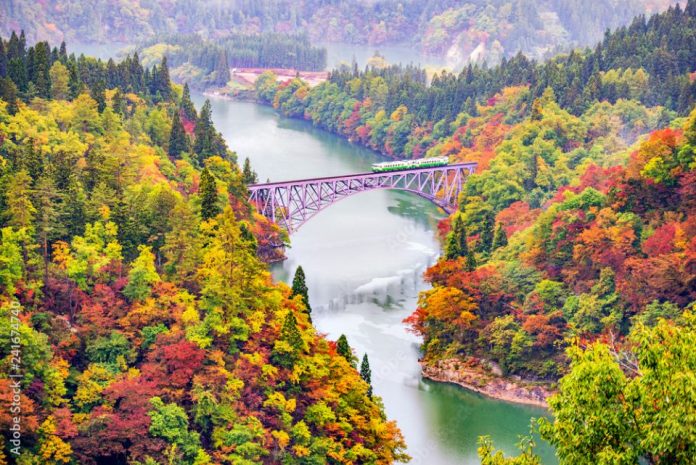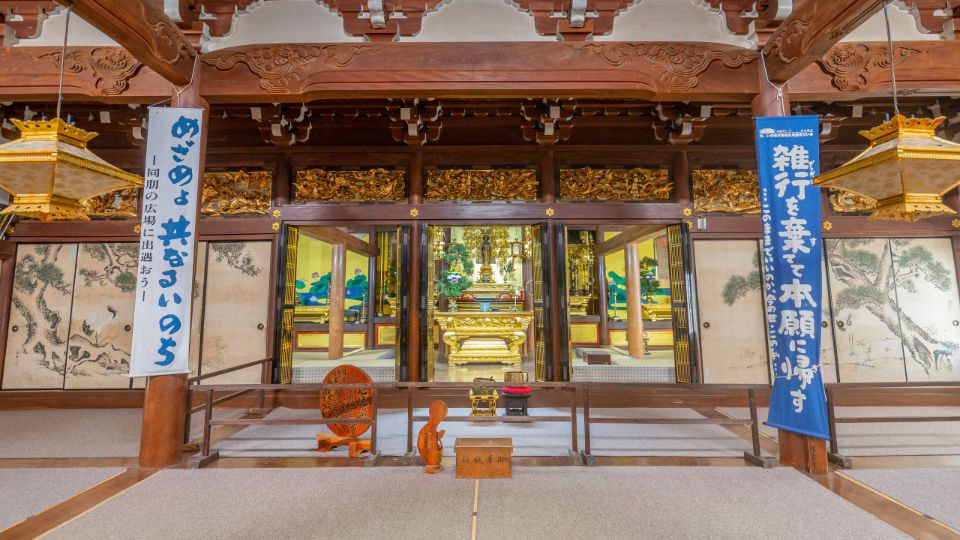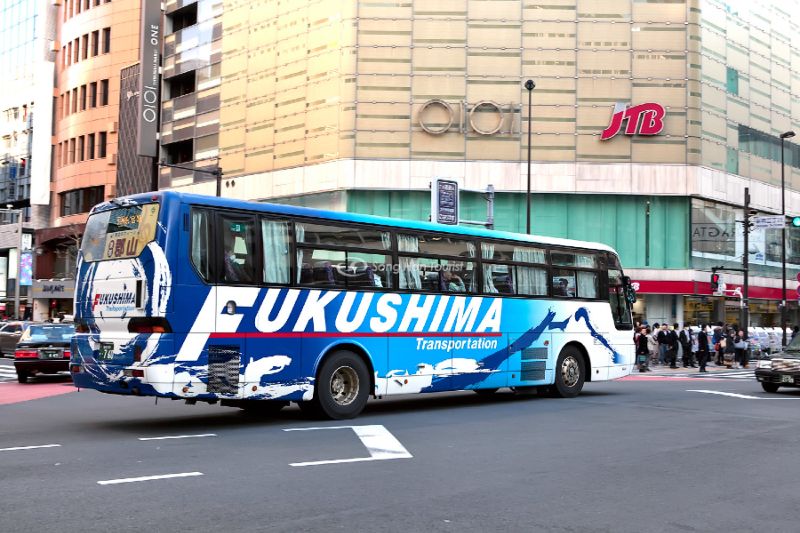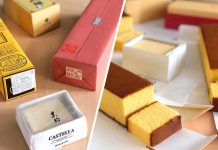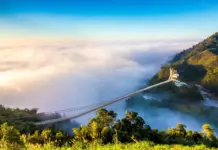Japan is known as the place with the most beautiful scenery in the world. Moreover, with its unique culture and famous cuisine, the “land of the rising sun” is known as the tourist paradise of Asia. Familiar places such as Tokyo, Mount Fuji, Osaka or Kyoto, … are probably too familiar to travel enthusiasts. One of the equally popular destinations in recent years is Fukushima.
- 7 days in Japan itinerary: Suggested 1 week in Japan itinerary for what to do in Japan for 7 days
- The ULTIMATE Uji travel guide: Top attractions, best things to do in Uji Kyoto, Tips & MORE
- Kyoto itinerary 5 days: How to spend 5 days in kyoto perfectly?
- 19+ best sightseeing spots & most beautiful places to see in Japan: Mountains – Forests – Seas – Cities
- The ULTIMATE Gifu travel guide: Top attractions, best places to visit, stay & MORE
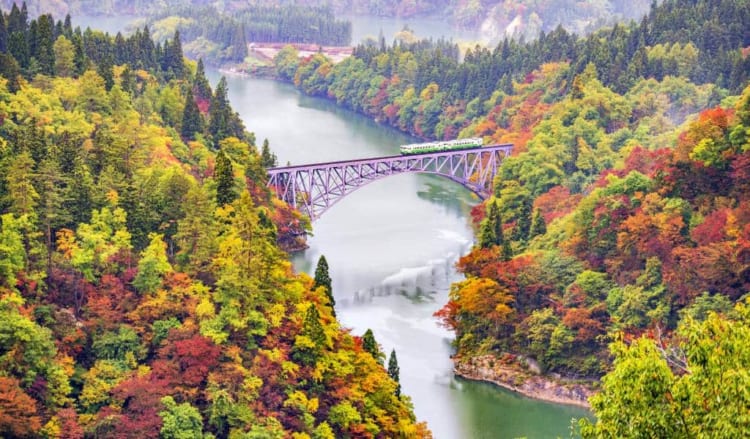
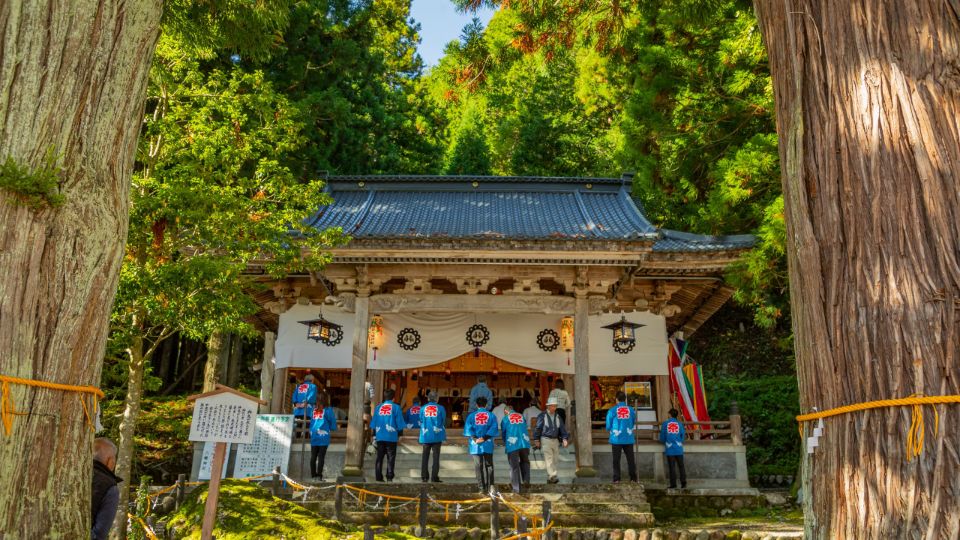

So, is Fukushima worth visiting, how to visit Fukushima, what to do in Fukushima? Let’s check out our Fukushima blog (Fukushima travel blog) with the fullest Fukushima travel guide (Fukushima guide) from how to get to Fukushima, best places to visit as well as top things to do in Fukushima to help you maximize your trip as follows!
Fukushima Prefecture is located in the southern part of the Tohoku region. Fukushima Prefecture is about 300km north of Tokyo. The capital is Fukushima City. With the name “Resurrection of Fukushima”, surely everyone will be curious about what attractive destinations this place will have when traveling to experience Fukuhsima.
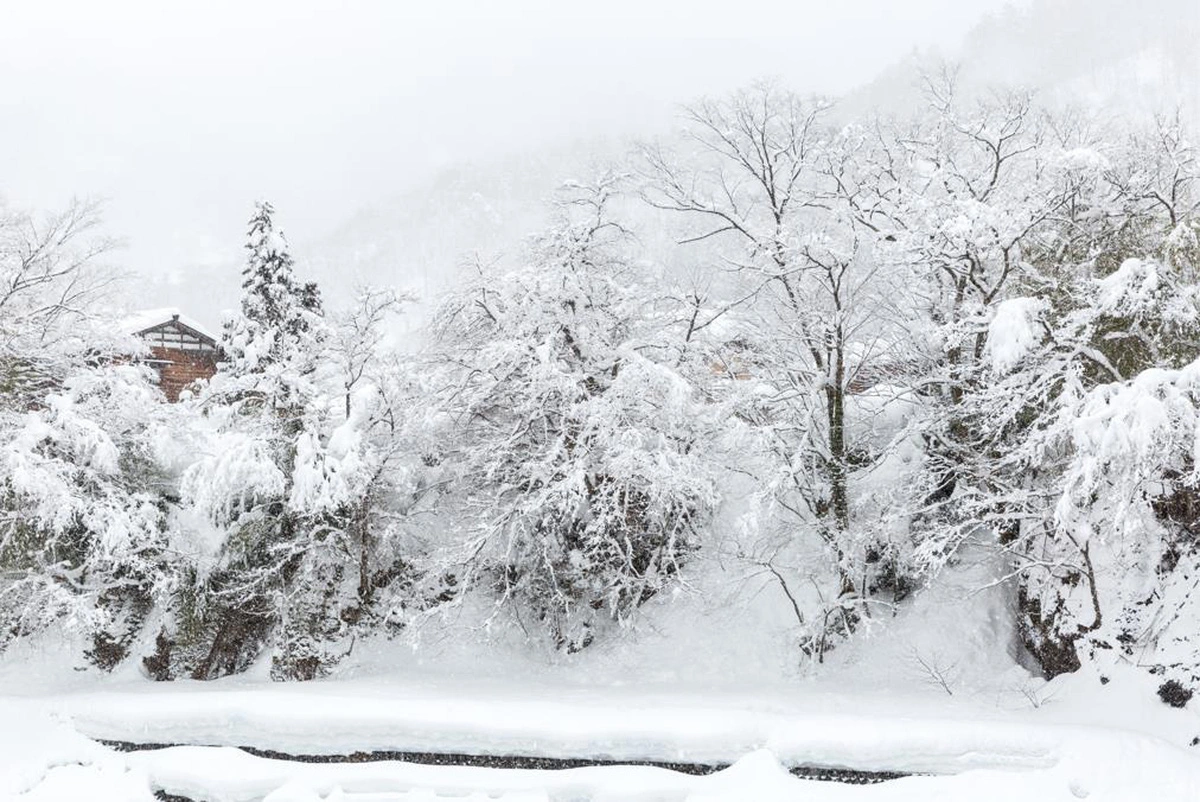
Fukushima is a place that gathers many natural beauties such as Goshikinuma, including dozens of large and small lakes and Lake Inawashiro reflecting the beautiful Bandai mountain on the water; the peaceful ancient town of Ouchijuku and the majestic Tsurugajo White Crane Castle… In winter, Fukushima is also an opportunity for you to play with white snow and experience hot spring baths which are very good for your health.

There are many famous tourist attractions here, each with its own unique beauty. That is why many people choose this place as a tourist and resort destination today. If you are planning to visit Japan, this will be a great suggestion.
Overview (#Fukushima travel blog)
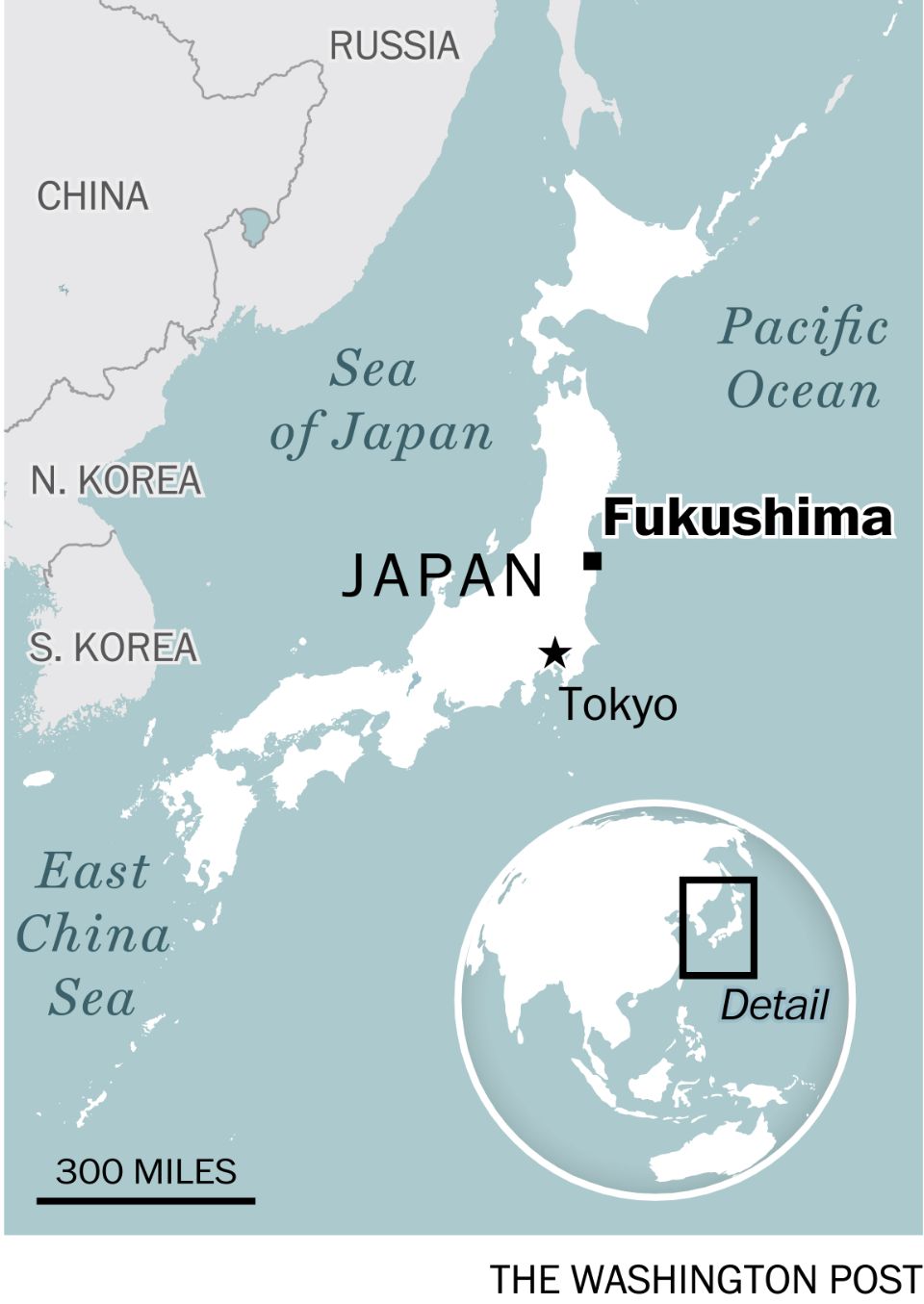
Perhaps when mentioning Fukushima, many people will remember that this is the land that experienced “double pain” when suffering from an earthquake and tsunami at the same time in 2011. Although experiencing loss and pain, after only 13 years it has entered the list of Japan’s most favorite destinations.
It is the 3rd largest prefecture in Japan with a total area of 13,783km2. Located about 300km from Tokyo, but with Japan’s modern transportation network, traveling and sightseeing becomes extremely convenient, that’s why many people choose it as a stopover every time they visit Japan.
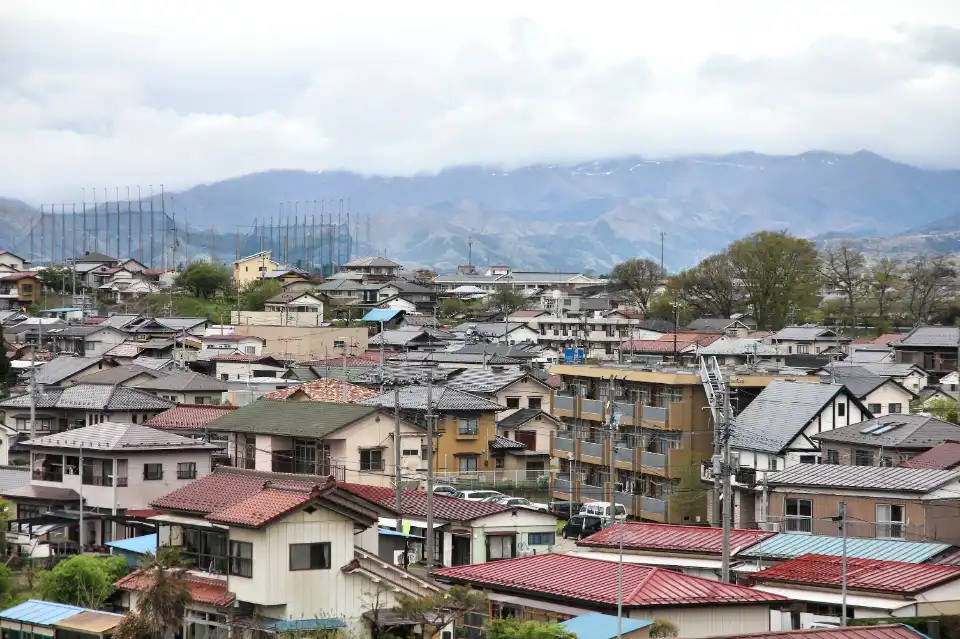
Fukushima is a prefecture located between Tokyo and Sendai, it is the economic, political and cultural center of the Tohoku region, Honshū island, Japan. It has one side facing the sea, the other 3 sides are bordered by other prefectures such as Tochigi, Yamagata, Niigata.
Fukushima is a coastal area, so it is famous for its fishing and seafood industry, besides, the province is also known for its electronics industry and nuclear power manufacturing industry.

The four seasons of the year are clearly shown with natural scenery changing with each season. Winter in Fukushima is not too harsh, at 4 degrees Celsius, with snowfall in December and January. This is a prominent Japanese tourist destination for those who love the winter beauty of the Land of the Rising Sun.
Why you should travel to Fukushima? (#Fukushima blog)
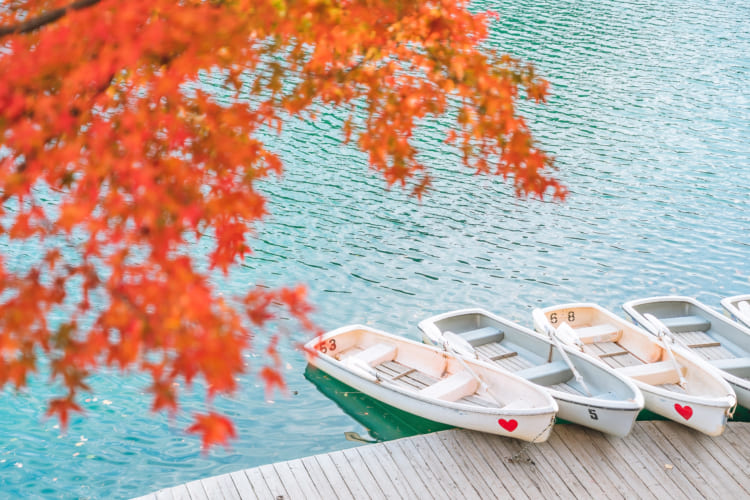
This is a land with a long history and many special traditional values. Since the Edo period, Fukushima has been famous for its warrior women and brave Samurai. These long-standing values have been preserved through festivals held in Fukushima all year round. Visitors may be impressed with the unique Hulu dance of Fukushima people.
Spectacular autumn landscape in Fukushima

Autumn is probably the most beautiful season in Fukushima. At this time, the natural landscape here will change color from red to orange and yellow extremely brilliantly. When coming here, visitors feel like being embraced by Fukushima’s autumn with a blanket of extremely warm and wonderful red leaves.
How to get from Tokyo to Fukushima?
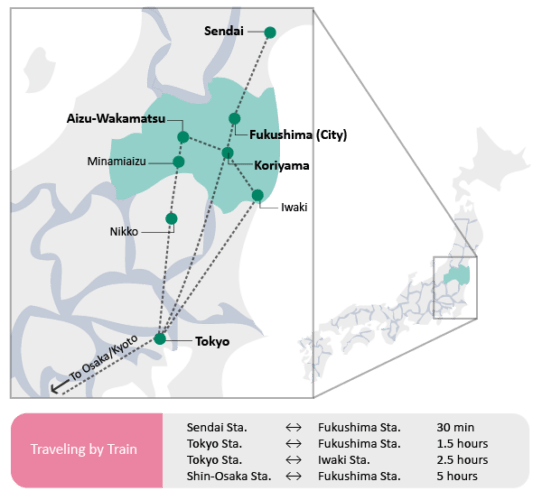
From the capital of Japan, Tokyo, there are many means of transportation to the peaceful countryside of Fukushima. Refer to some of the following means of transport and ways of travel to make the most reasonable choice!
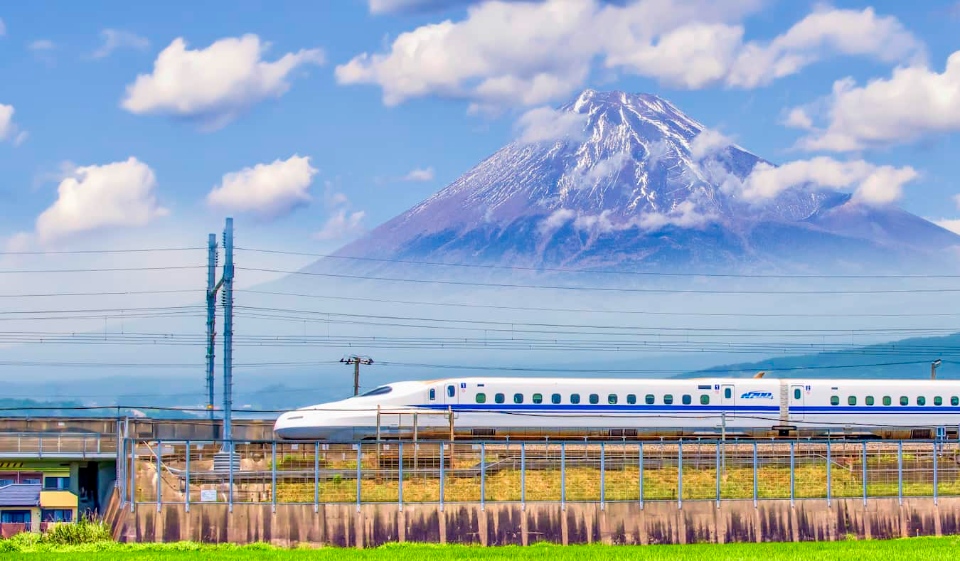
- Train: Some trains take you from Tokyo to Fukushima such as Koriyama, Omiya, Fukushima… with lines such as JR Tohoku Line, JR Takasaki…
- Shinkansen bullet train: Traveling from Tokyo to Fukushima by Shinkansen is the most convenient and fastest way to travel. Normally, the travel time is only about 1 hour and 30 minutes and the break time between trips is from 10 to 30 minutes. You can choose the Tsubasa or Yamabiko train to travel to the station that stops right at Fukushima.
- Bus: Traveling by bus will take you much longer (about 5 hours) with bus routes such as JR Bus Tohoku, Fukushima Transport, JR Bus Kanto…
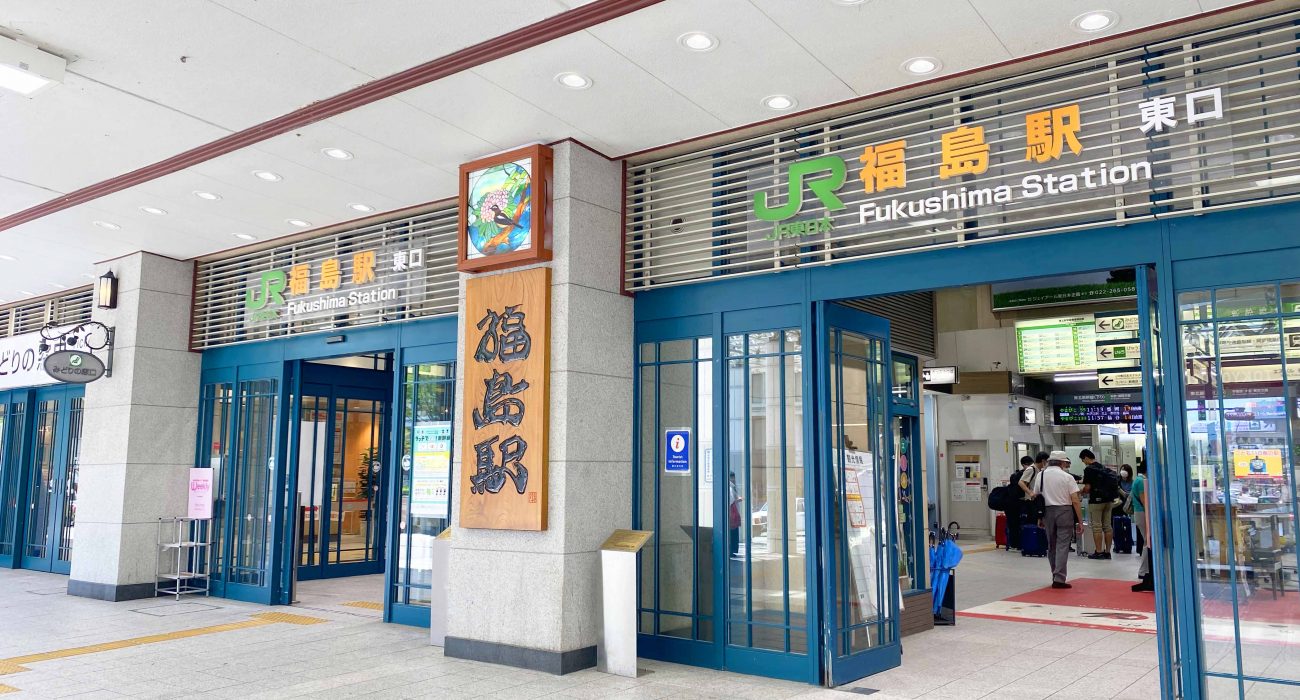
When to go to Fukushima?
According to the shared experience of traveling to Fukushima, each season has its own beauty and attracts visitors. So let’s take a look at the characteristics of each season to see which season you like to come here.
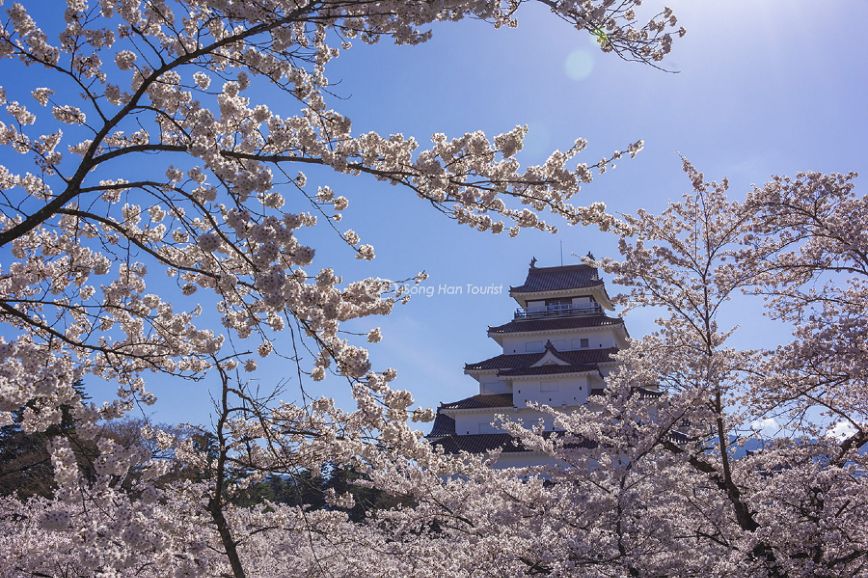
In winter, the average temperature is about 1 to 7 degrees Celsius and can drop below 0 degrees Celsius in the highlands. Spring has an average temperature of about 8 to 15 degrees Celsius. Summer has an average temperature of about 20 to 30 degrees Celsius. Autumn has an average temperature of about 15 to 25 degrees Celsius.
Spring from March to May (#Fukushima travel blog)
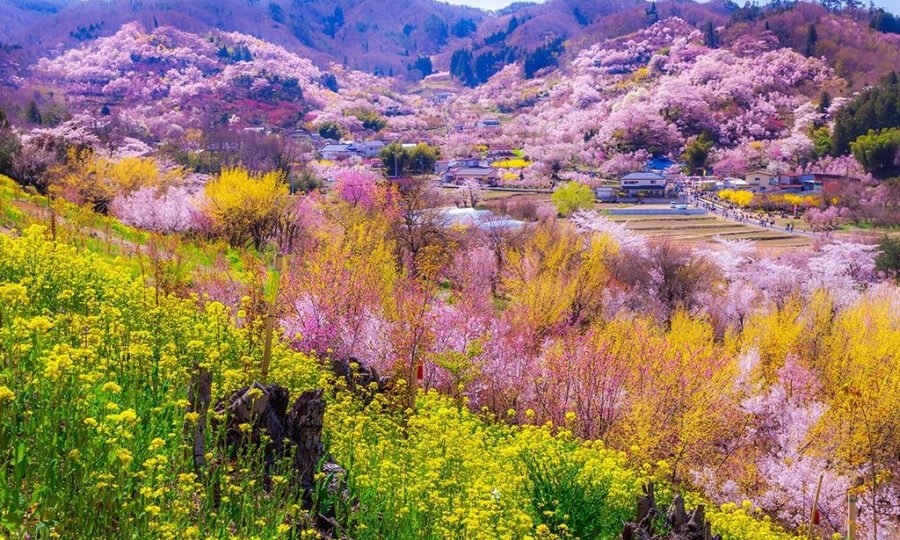
In spring, the cool, chilly weather pleases visitors. Known as the “land of cherry blossoms”, it is no surprise that in spring, Fukushima’s landscape is filled with cherry blossoms. The graceful flowers falling in the wind create a scene that makes people gasp.
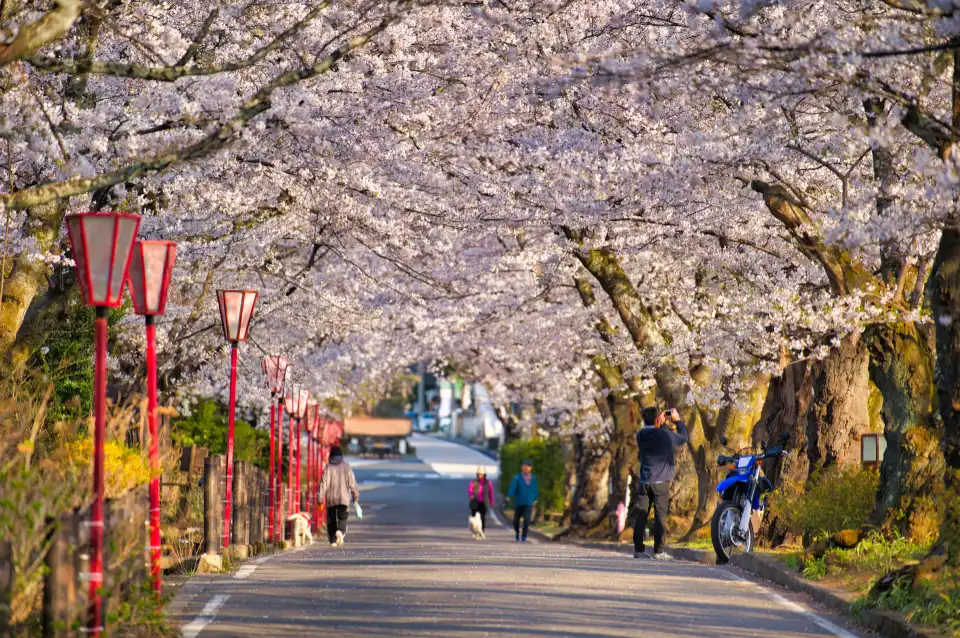
In addition, in this season, Fukushima’s Hanamiyama Park becomes more vibrant and brilliant than ever with more than 60 types of flowers blooming. Coming here in the spring, you will have a true look at the beauty of Japan that has been described in literary works.

I traveled to Fukushima on a spring day when the cherry blossom gardens were in full bloom, mixed with the colors of plum blossoms, rapeseed flowers, camellias, etc., making Fukushima look like an artistic painting of nature. The beautiful spring scenery here is also a symbol of strength and rebirth after the double disaster in 2011. And Fukushima is always ready to welcome everyone with its pure beauty and sincere hospitality.
Summer from June to October (#Fukushima blog)

Traveling to Fukushima in the summer, you will definitely have the opportunity to enjoy interesting experiences. Outdoor tourism activities in the summer are chosen by many people. When trekking or picnicking, visitors will be immersed in the green beauty of the mountains. Moreover, this is the harvest season of many fruits, two of which are peaches and cherries. In season, you will have the opportunity to enjoy delicious fresh fruits.
Autumn from September to November
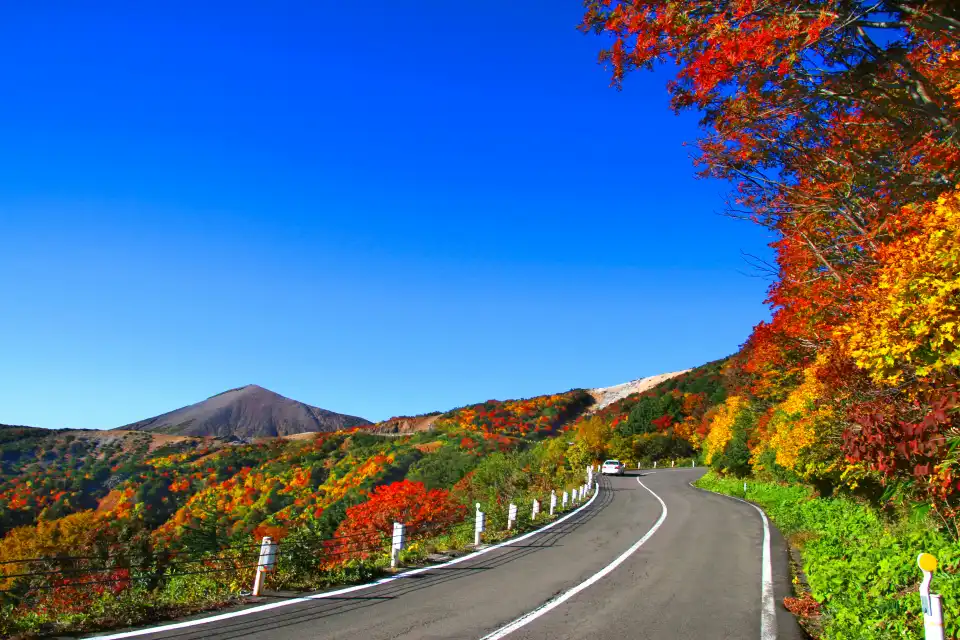
Visit Fukushima in the fall, also known as the “red leaf season” with red leaves covering the sky. In particular, this is also the season with many traditional festivals typical of Japan. With mild weather that is not too cold, this will probably be an interesting experience for tourists from hot countries like Vietnam.
Winter from December to February
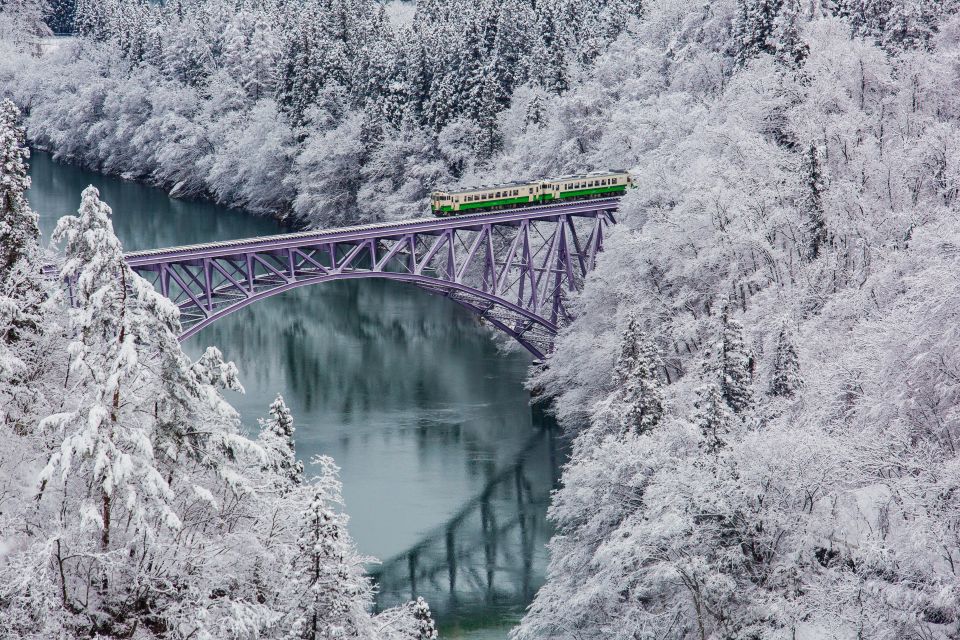
Fukushima is located in the Northeast, so it has a lot of fine snow in the winter, turning many places into beautiful snow paintings. If you want to immerse yourself in the white snow scene, experience snow-related activities, this is considered the most ideal time.
Weather greatly affects tourism. So before planning any trip, don’t forget to learn about it to have a more complete trip.
Festivals, events in Fukushima
Fukushima has many different festivals and events from traditional events to modern events. Some notable events:
- Aizu Wakamatsu Castle Festival: a festival held annually at Aizu Wakamatsu Castle, featuring performances of Japanese history and classical arts.
- Kitakata Ramen Festival: a festival held annually in Kitakata City, featuring performances of Ramen and other specialty foods.
- Aizu Autumn Festival: a festival held in autumn, featuring performances of arts and classical music.
- Aizu Cherry Blossom Festival: a festival held during the cherry blossom season, featuring cherry blossom activities and performances.
- Three Great Festivals of Fukushima: a festival held annually in Aizu Wakamatsu, featuring activities and performances of history and arts.
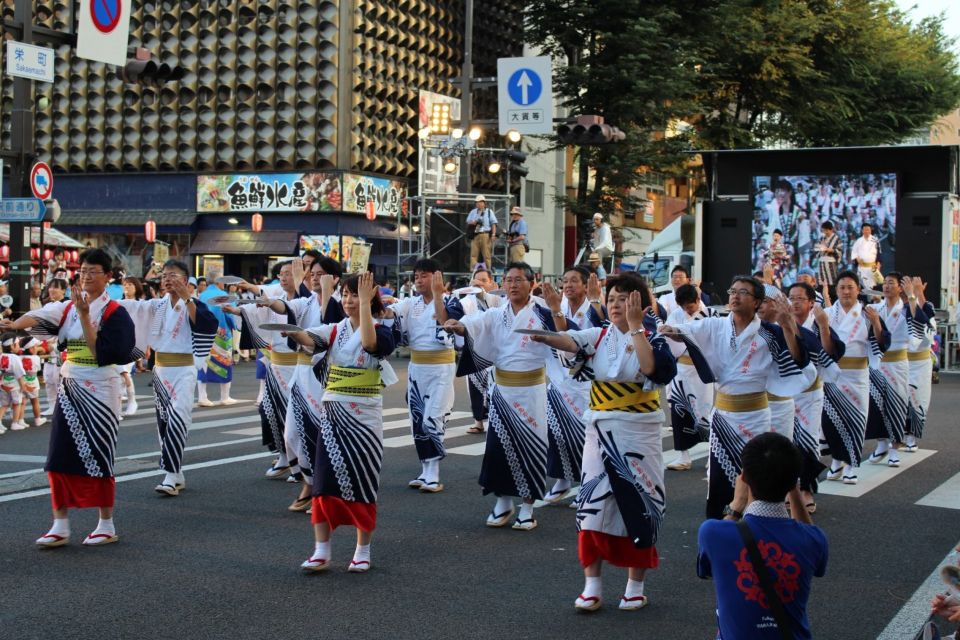
What to do and where to go: Must-see attractions when traveling to Fukushima
Tsurugajo White Crane Castle
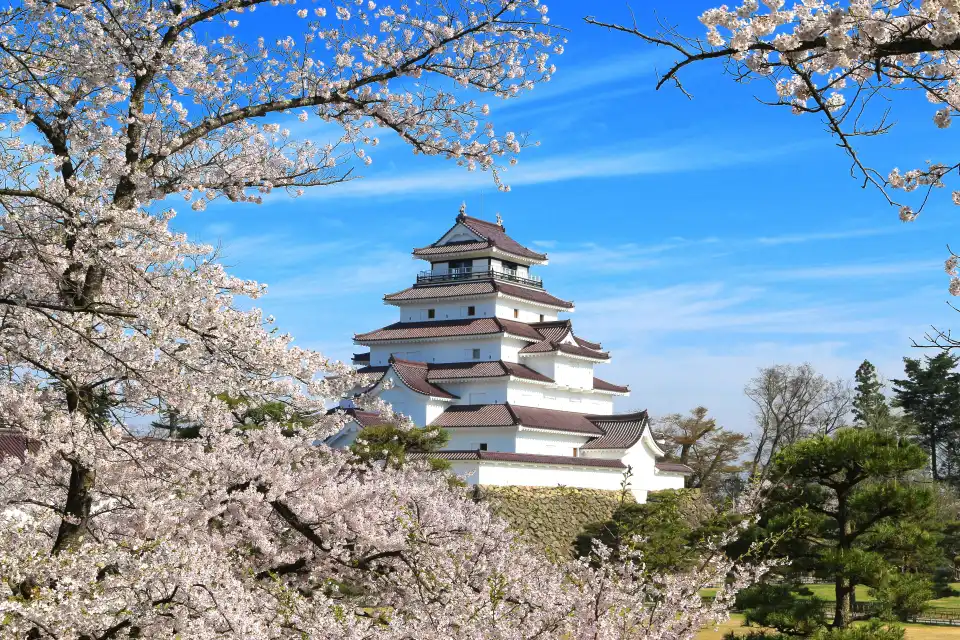
Tsurugajo Castle is loved as a symbol by the local people and many others call Tsurugajo Castle Aizu Wakamatsu Castle. It can be said that Tsurugajo White Crane Castle is one of the most famous castles in Japan. Because when the Boshin War occurred from 1868 to 1869, the Aizu army defended this castle and was not defeated during a month-long siege until the last minute.
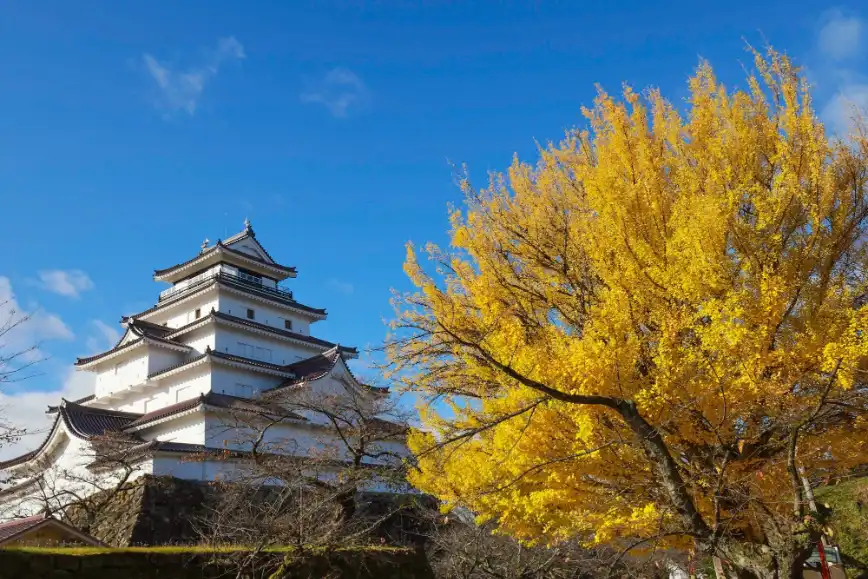
Impressive by its majestic beauty, Japanese-style architecture, and blending in with the poetic mountains and forests. Tsurugajo Castle has become a memorable symbol when mentioning Japan.
Tsurugajo White Crane Castle was built in the 14th century, this was the first and only red-tiled roofed castle at that time. In 1868, due to the war, this place was largely destroyed. It was only later that it was restored and reopened to visitors in 1965.
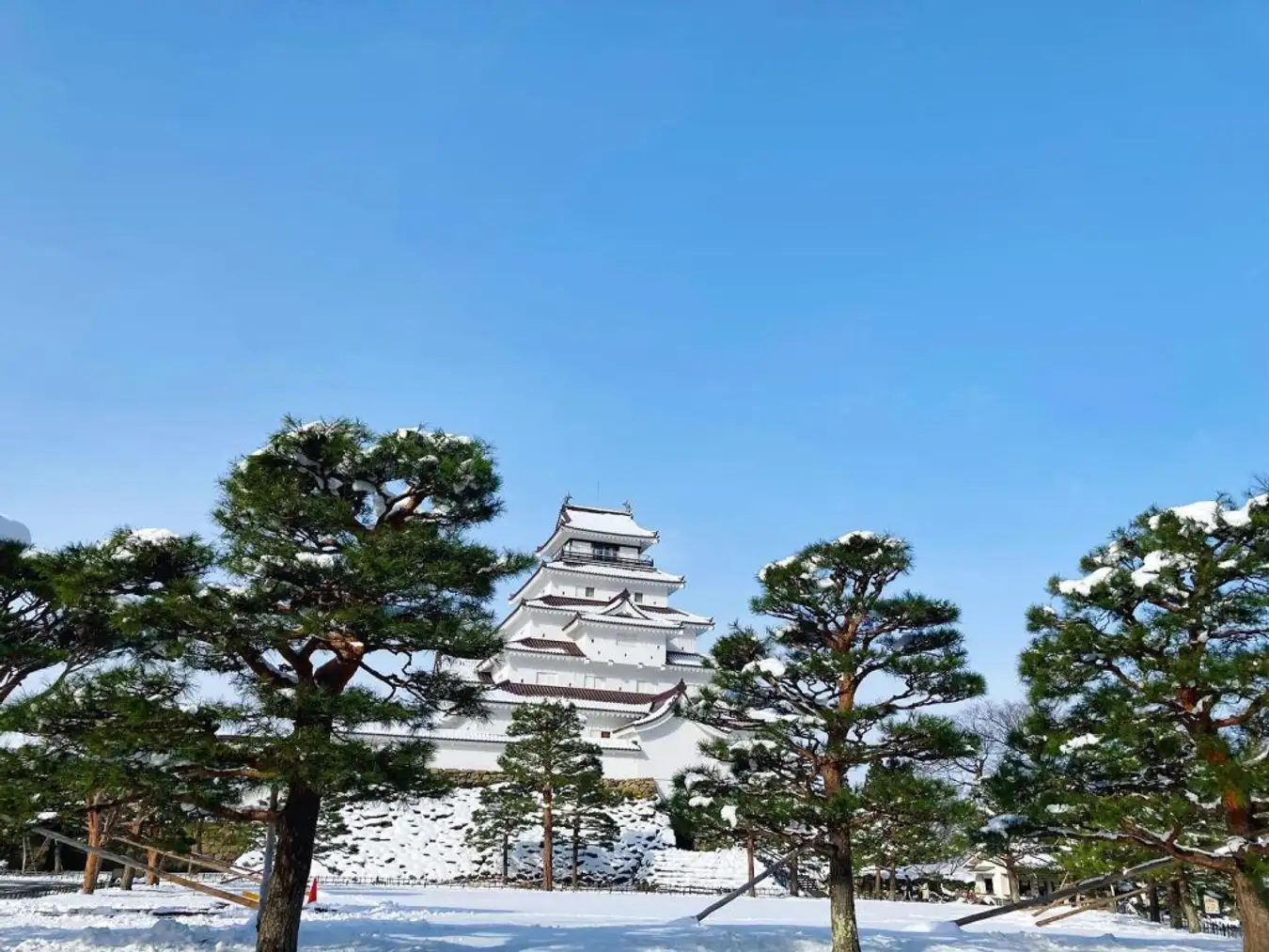
If you come in April, this is a great time to see cherry blossoms, thousands of blooming trees create a beautiful scene. It can be said that this scene contributes to the value of Tsurugajo Castle. In addition, there is a tea house in the castle grounds, where visitors can enjoy green tea and learn more about Japan’s famous tea ceremony culture.
After the Boshin War, Tsuruga Castle suffered heavy damage, the architectural works were abandoned and gradually completely destroyed. However, by 1965, the Honmaru (main house) and the largest tower of the castle, the Tenshu, were restored. The roof of the castle is the only one of its kind to use red bricks.
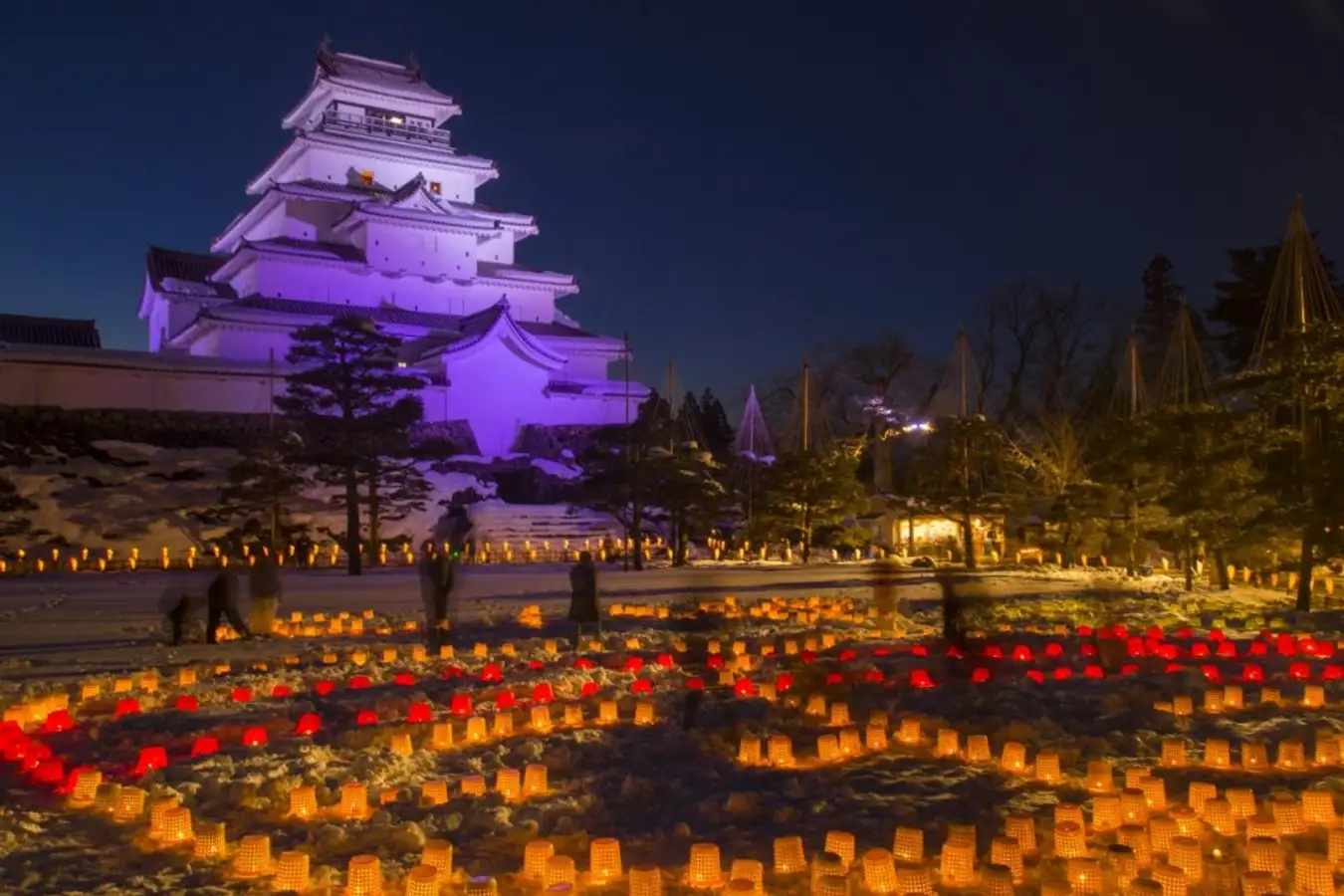
The Tsurugajo Castle grounds are a great place to see Tohoku cherry blossoms in mid-April; the view from the top of the outer walls is especially impressive. Inside the tower, which is now open to the public as a Tsurugajo Castle Folk Museum, in recent years, there has also been a Projection Mapping event – considered a reenactment of the Great East Japan Earthquake, so Japanese tourists in Fukushima can feel the history of Tsurugajo White Crane Castle.
Ouchijuku Ancient Town

Ouchijuku is a former post town from the Edo period, located on the Aizu Nishi Kaido trade route and connecting Nikko with Aizu. The neighborhood of more than 50 thatched-roof houses along both sides of the road is now designated as an important national traditional architectural preservation area.


Ouchijuku is nestled in the mountains southwest of Aizu in Fukushima Prefecture. It was formerly a rest stop for lords, travelers, and those transporting food to Edo. (Now Tokyo)
Today, Ouchijuku has become an attractive Fukushima Japan tourist destination with its old-fashioned residential architecture and nostalgic atmosphere. In particular, it has been classified as an important traditional architectural preservation area of Japan.
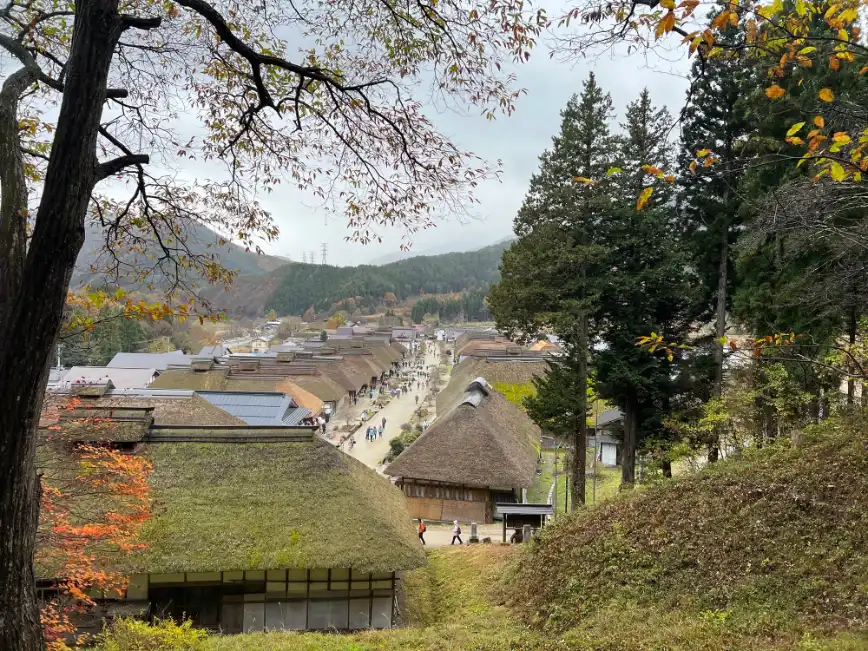



If you have the opportunity, you can visit on the weekend in mid-February every year. On this occasion, the Ouchi-juku Yuki-matsuri snow festival takes place here. The reflection of light from the sparkling flames, combined with the white snow, creates an extremely magical scene. Combined with traditional Japanese music and dance. All create an unforgettable experience for travelers to Japan for the first time.
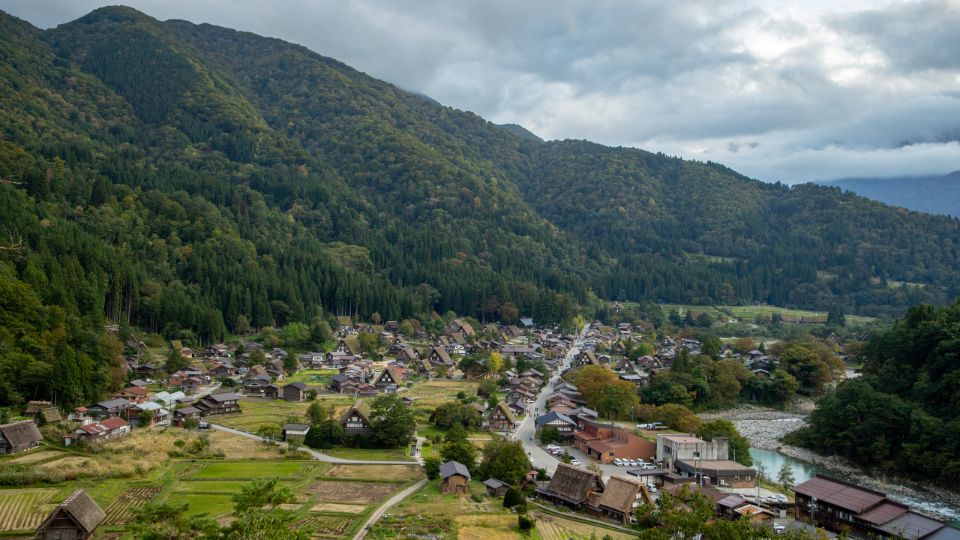
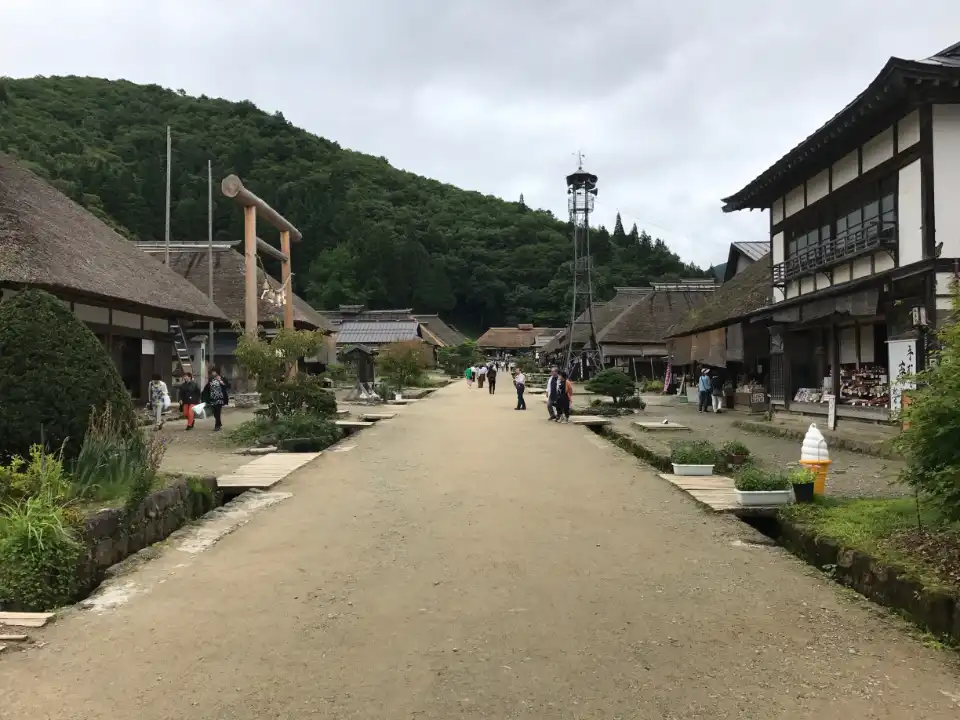

The Aizu Samurai Residence (Aizu Bukeyashiki)
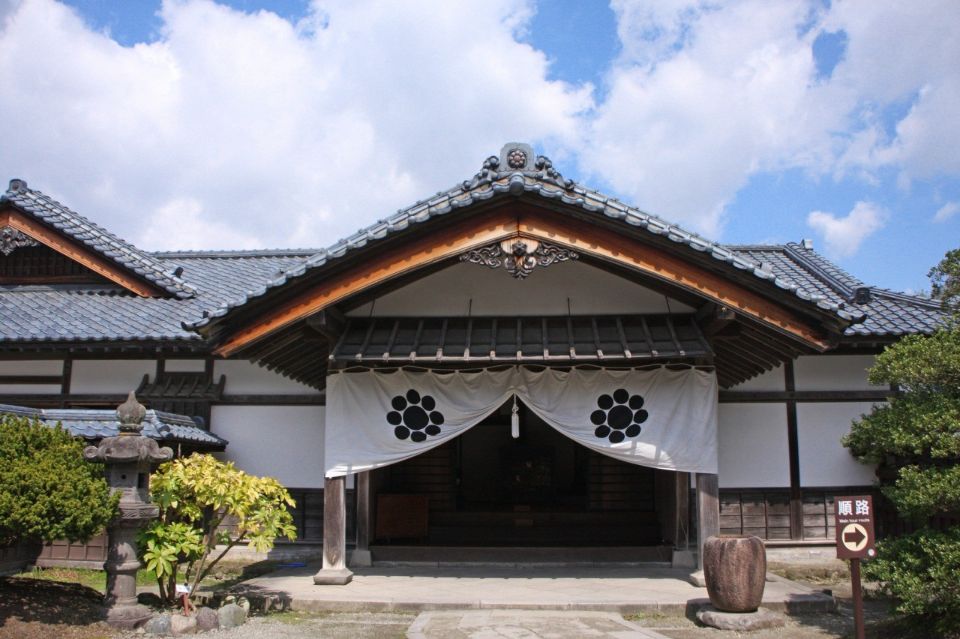
This is a restored residence from the residence of Saigo Tanomo – a butler in the Aizu domain. The Saigo family were servants of the Matsudaira family and held the position of Karo (butler – the highest position among servants) for many generations. The Aizu Samurai Residence is a magnificent architectural structure built from Cedar, Keyaki and Hinoki trees on a 2400m2 plot of land.
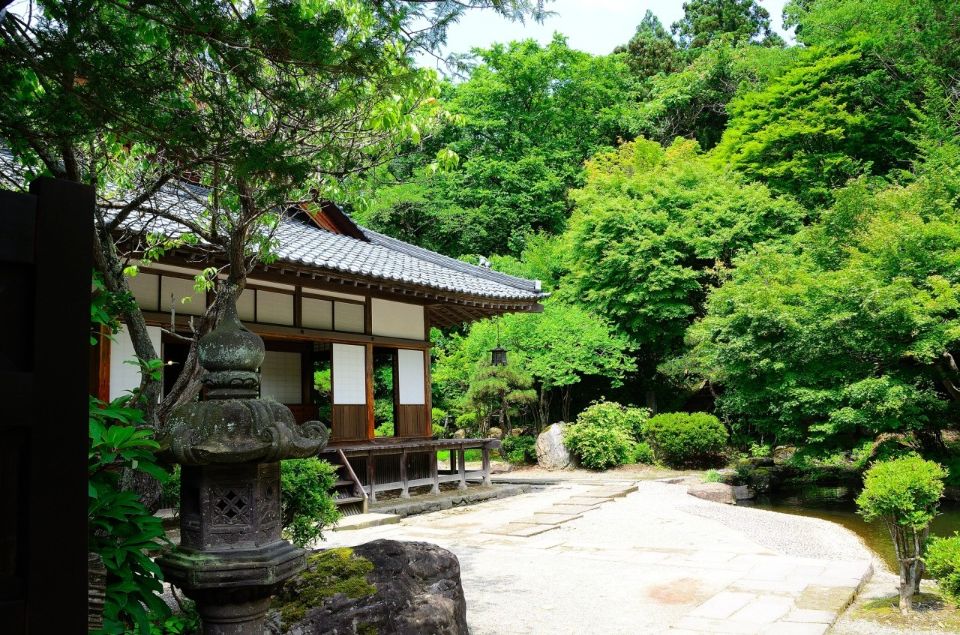
In the residence, there are wax figures to recreate how people used the rooms at that time. At the Aizu Samurai Residence, in addition to visiting the architecture, you can experience 4 genres: glass sculpture, Akabeko painting, Okiagari Koboshi doll making, and archery.
Bandai-Azuma Skyline
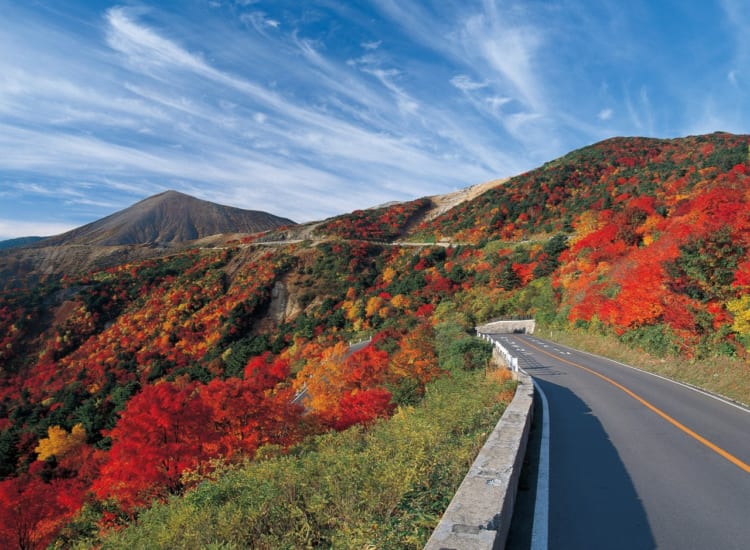
This is the old toll road that runs straight to Urabandai, passing through Bandai Asahi National Park. The panorama of the beautiful mountains and lakes, there are many tourist attractions such as Nametaki Falls, Tobitaki Falls, Maboroshi-no-Taki Falls, etc., which change with the seasons. The Bandai Azuma Golden Road was also voted one of the 100 most beautiful roads in Japan.
Kasumigajo Castle Park (Nihonmatsu Castle)

Before entering Nihonmatsu Castle, I saw bronze statues to remind me of the Boshin War in 1868. At that time, they called on young people to join the fight to protect their homeland, some of them were only 13-17 years old. And these statues are to honor the Nihonmatsu Youth Corps who died in that war.
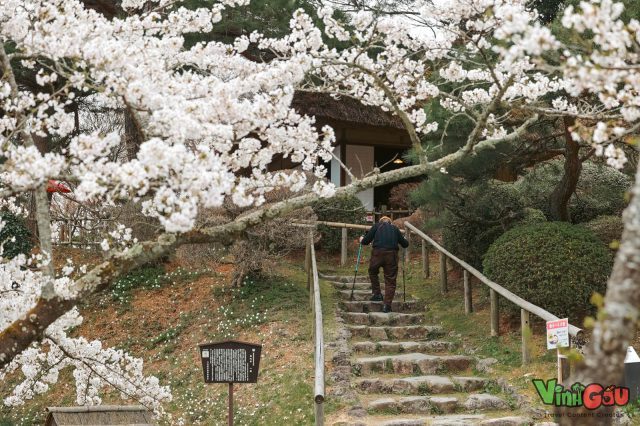
The ancient castle is also known as “The Castle in the Mist”. They call it that because in spring, thousands of cherry blossoms bloom white all over the area, making the surrounding space seem to be covered in a layer of fog.
When I come here, I like to stand still at the Tea House halfway up the hill and watch the branches sway in the gentle wind, occasionally a few petals fall onto the calm lake. I say… it’s so beautiful and poetic!
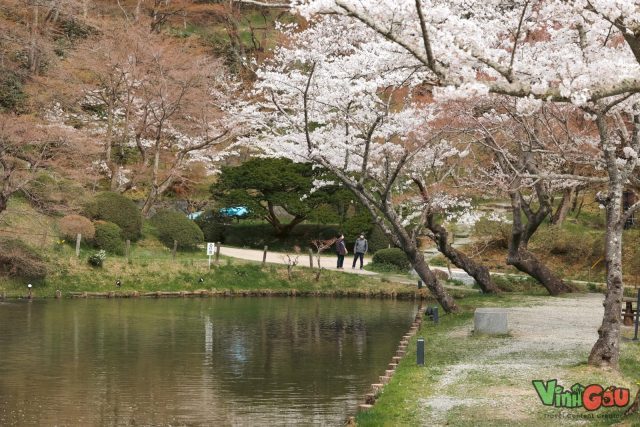
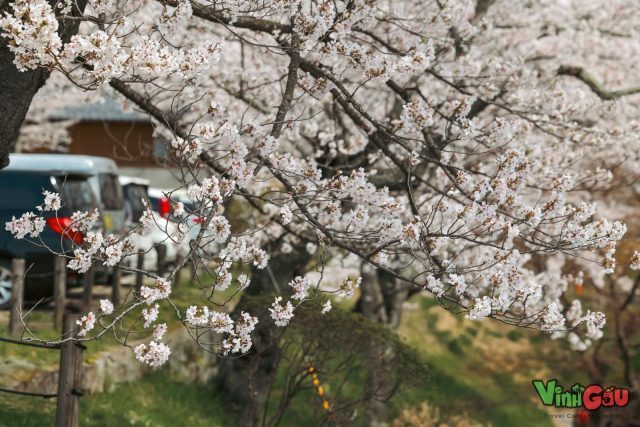
How to get there: Take the train to Nihonmatsu Station and walk for about 20 more minutes to get there.
Miharu Takizakura 1000-year-old cherry blossom
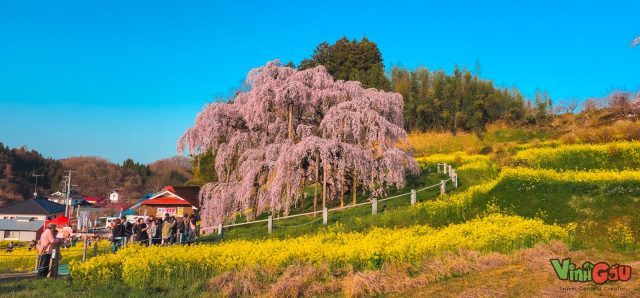
This is where the “ancient” cherry blossom is over 1000 years old and is one of the three most beautiful cherry trees in Japan. When spring comes, the cherry blossom branches hang down on the tree trunk about 13.5 meters high and the canopy is up to 25 meters wide, creating the feeling of a multi-layered waterfall of flowers.
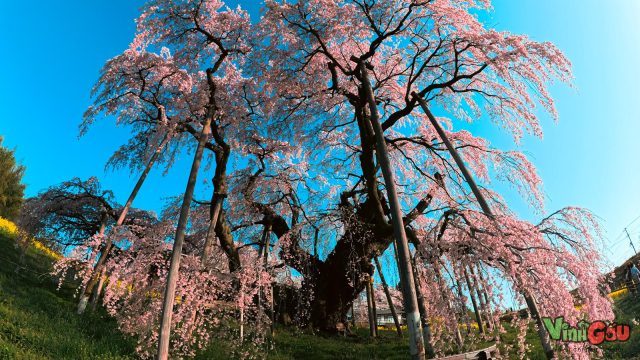
When I arrived, the flowers were light pink instead of the usual bright pink, but the poetic beauty remained unchanged, still very attractive to all eyes.
Surrounding the “old tree” are fields of bright yellow rapeseed flowers in the sun, making the whole sky more brilliant and magnificent. If you have time, you should climb the nearby hill to enjoy the beautiful cherry blossoms.
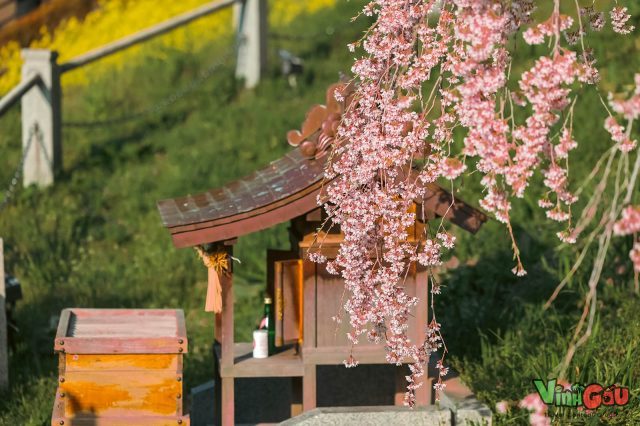
Miharu Takizakura is not only a symbol of natural beauty but also a symbol of vitality, patience and perseverance in Japanese culture and history.
Ticket price: 500 Yen/person
How to get there: Take the train to Miharu Station and then take the bus to Miharu Takizakura
Yunokami Onsen Station
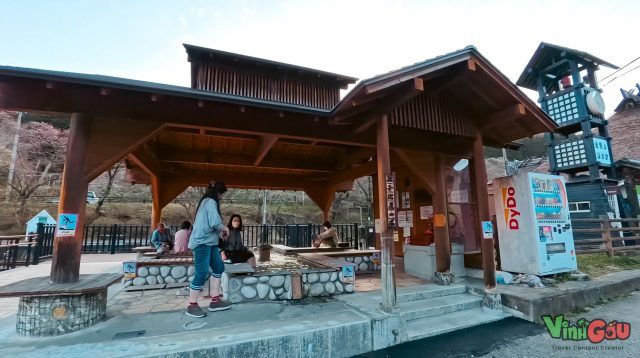
This Yunokami Onsen Station is very unique because you can soak your feet in natural hot mineral water, watch cherry blossoms gently blowing in the wind, and enjoy hot cups of tea while waiting for the train. In particular, this is the only station in Japan with a thatched roof.
Since the Edo period, people here have discovered natural hot springs in this Tohoku mountain region. Since then, this place has attracted a large number of visitors to come here to relax and improve their health when bathing in onsen here. In the 20th century, when tourism began to develop, Yunokami Onsen Station was built to make it convenient for people to visit this area.
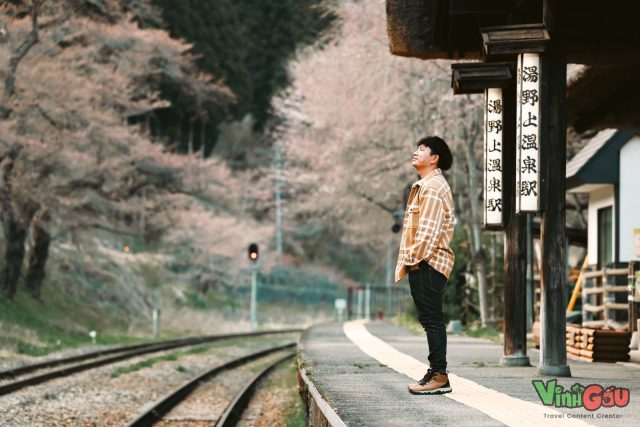
The architecture of this station is imbued with traditional Japanese style with soft lines, curved roofs covered with thatch, large windows to let in natural light… Thanks to that, this station is one of the most checked-in spots in Fukushima Prefecture, it looks so poetic. It’s just a pity that when I arrived, the cherry blossoms here had not bloomed yet, so the beauty was only 8/10 points.
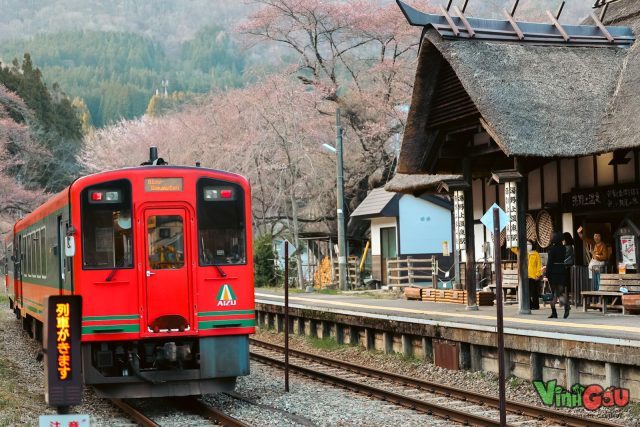
Coming to this station, you can choose to stay at nearby inns to enjoy the hot springs and it is also the closest station for you to get to the ancient village of Ouchijuku.
Hanamomo no Sato Flower Garden
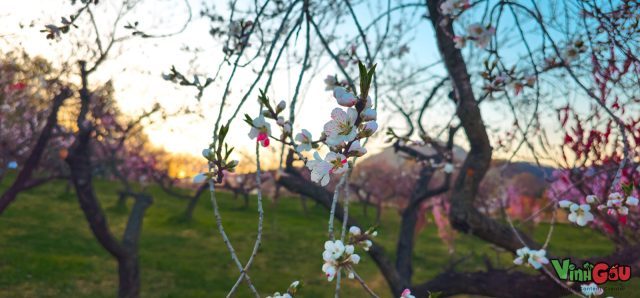

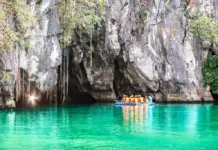
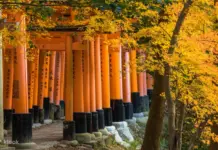





























![10 best airports in Asia in 2016 [RANKED] kuala-lumpur-international-airport-best airports in asia in 2016 by skytrax ratings](https://livingnomads.com/wp-content/uploads/2016/08/29/kuala-lumpur-international-airport-best-airports-in-asia-in-2016-by-skytrax-ratings-218x150.jpg)








